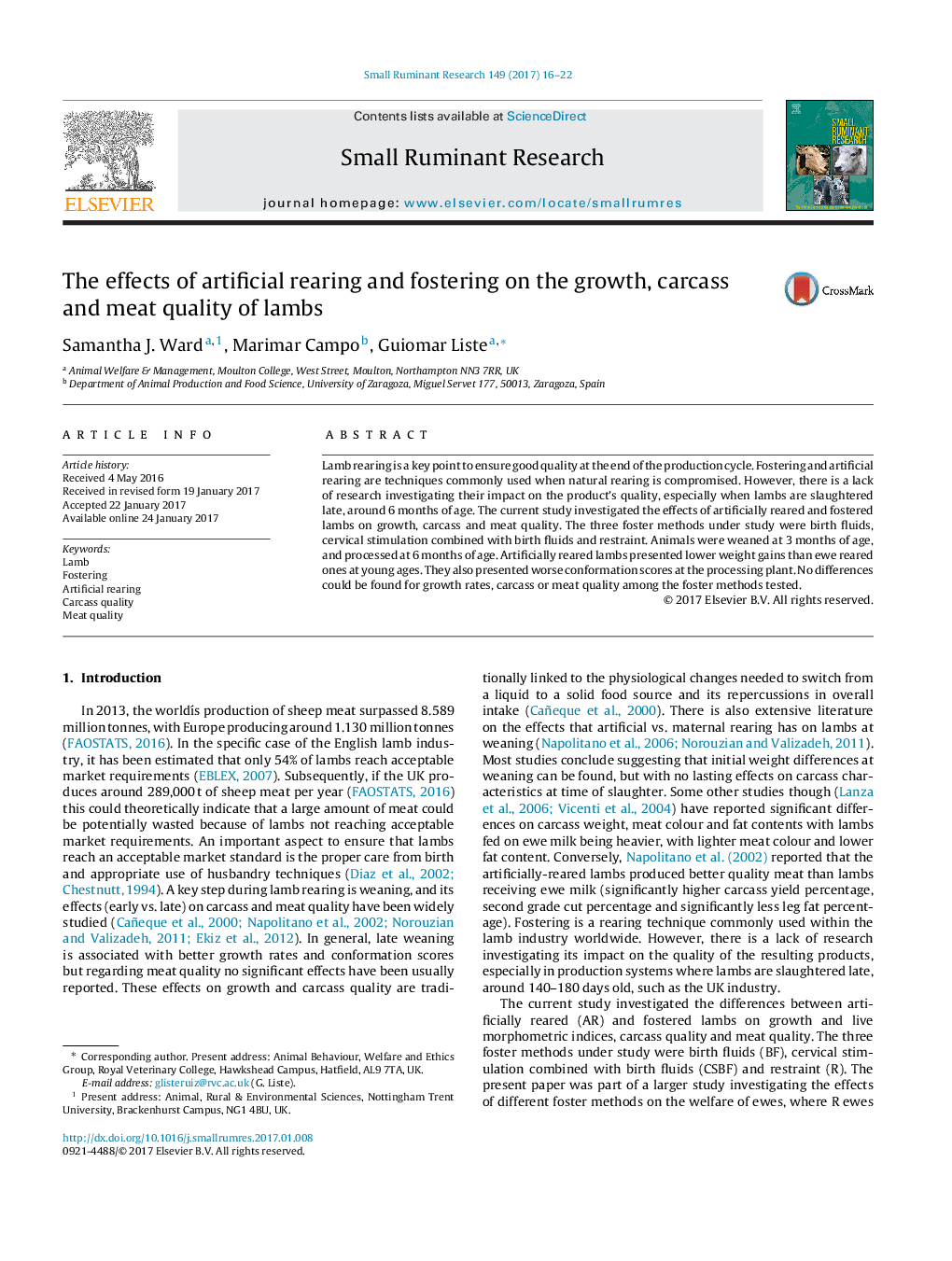| Article ID | Journal | Published Year | Pages | File Type |
|---|---|---|---|---|
| 5544260 | Small Ruminant Research | 2017 | 7 Pages |
Abstract
Lamb rearing is a key point to ensure good quality at the end of the production cycle. Fostering and artificial rearing are techniques commonly used when natural rearing is compromised. However, there is a lack of research investigating their impact on the product's quality, especially when lambs are slaughtered late, around 6 months of age. The current study investigated the effects of artificially reared and fostered lambs on growth, carcass and meat quality. The three foster methods under study were birth fluids, cervical stimulation combined with birth fluids and restraint. Animals were weaned at 3 months of age, and processed at 6 months of age. Artificially reared lambs presented lower weight gains than ewe reared ones at young ages. They also presented worse conformation scores at the processing plant. No differences could be found for growth rates, carcass or meat quality among the foster methods tested.
Related Topics
Life Sciences
Agricultural and Biological Sciences
Animal Science and Zoology
Authors
Samantha J. Ward, Marimar Campo, Guiomar Liste,
